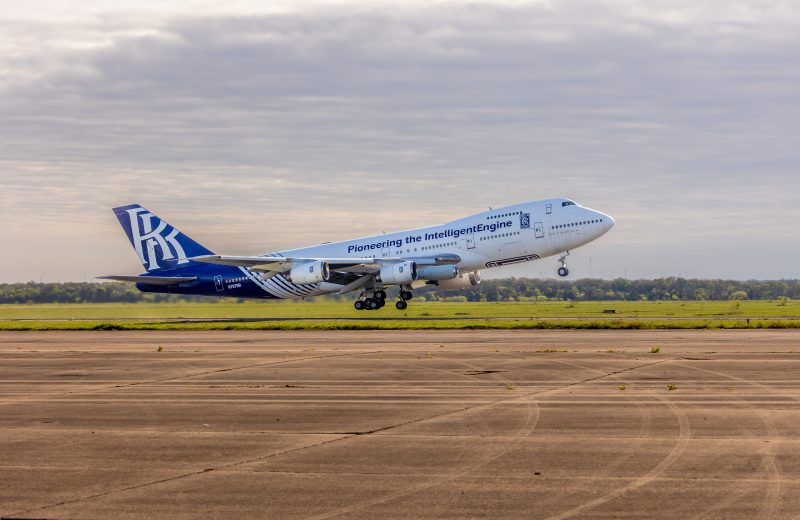Rolls-Royce’s Pearl

WACO, TEXAS, USA - MARCH 19:Flight test of the Rolls-Royce Pearl® 10X, on the The Rolls-Royce Flying Testbed (FTB), the Spirit of Endeavour (Boeing 747-400)
Rolls-Royce has a tradition of naming its engines after rivers. But only keen British fisherman know the Dart, Trent, Tay, Derwent and Welland well.
With its Pearl engine family, it managed to keep everyone happy. It has never said if the engine is named after the Chinese Pearl River or the one that flows through Mississippi and Louisiana. Canada, Costa Rica and New York state also have Pearl Rivers or Rio Perlas so it could be theirs.
This week Rolls-Royce started flight-testing the Pearl 10X which will power Dassault’s flagship Falcon 10X. The Pearl 10X is the most powerful business aircraft engine the manufacturer has ever made.
A Pearl 10X test engine has been fitted to Rolls-Royce’s Boeing 747 flying test bed. Plane spotters wanting to see the five-engine aircraft need to go to Tucson, Arizona. The testing includes engine performance and handling checks at various speeds and altitudes, in-flight relights, tests of the nacelle’s anti-icing system and fan vibration tests at various altitudes. It has already been tested for more than 2,300 hours on the ground and can use 100% sustainable aviation fuel.
Rolls-Royce and Dassault got very close to working together in the past. But this will be the first Rolls-Royce engine to power a Dassault aircraft.
“The market success of the Pearl engine family has been outstanding,” said Dr Rob Watson, president civil aerospace, Rolls-Royce at the company’s capital markets day last year. It has been key to its business aviation division. Before the launch of the engine in 2018 there was talk of Rolls-Royce losing market share.
Textron had selected Snecma’s Silvercrest for its Hemisphere and in 2013 Dassault chose it for its planned Falcon 5X. Neither aircraft happened, but in 2014 Gulfstream chose Pratt & Whitney engines for the G500 and G600. This was a blow as the company had powered every large-cabin Gulfstream since the G1 in 1958.
Rolls-Royce announced the Pearl family when the engine was picked for Bombardier’s Global 5500 and Global 6500 aircraft. It then went on to win hard-fought campaigns for Gulfstream’s newly certificated G700, the upcoming G800 and Dassault’s Falcon 10X. Rolls-Royce says it had 70% market share in the large business jet market in 2022 and 85% in the ultra-long-range market.
Large commercial engines that power widebody airliners dominate Rolls-Royce’s commercial aviation division – making up 72% of its 2023 aerospace sales. But business aviation is the next biggest part with 21% of sales. Tufan Erginbilgic, who became Rolls-Royce’s CEO in January 2023, has stressed the importance of business aircraft to the company.
Rolls-Royce is ramping up production. It delivered 165 business aviation engines in 2022, 223 in 2023 and it is aiming for close to 300 in 2024. As new aircraft with its engines are delivered it will, of course, see flight hours rise and aim to enrol new customers in its Corporate Care programme.
The newly certificated Gulfstream G700 will drive a lot of this as the Savannah manufacturer ramps up delivery. Gulfstream is planning to deliver 50 G700s in 2024.
At its investor day last year, the company forecast 8-9% annual delivery growth for its business aviation engines. This is compared with 3% for the large aircraft market.
The Falcon 10X still has a way to go before it is certificated, but Rolls-Royce should still celebrate the start of flight testing. If anyone is looking for a venue, there are hundreds of Pearl River Chinese restaurants to choose from.
Subscribe to our free newsletter
For more opinions from Corporate Jet Investor, subscribe to our One Minute Week newsletter.








